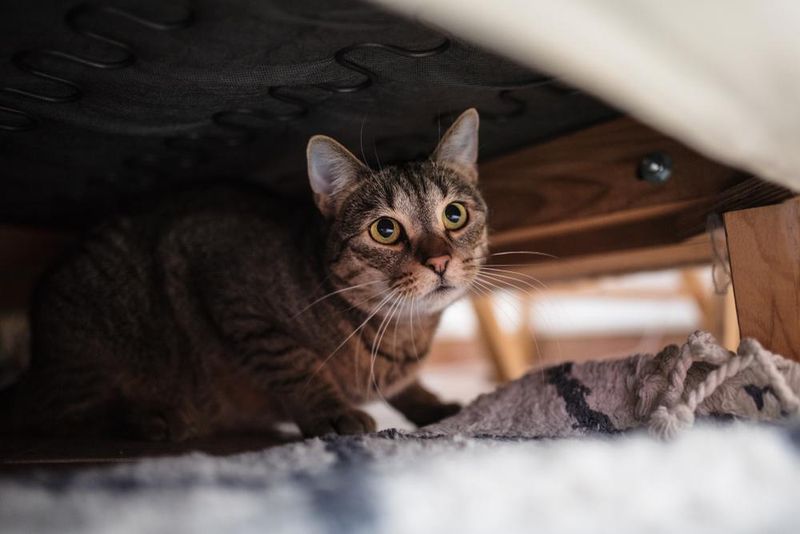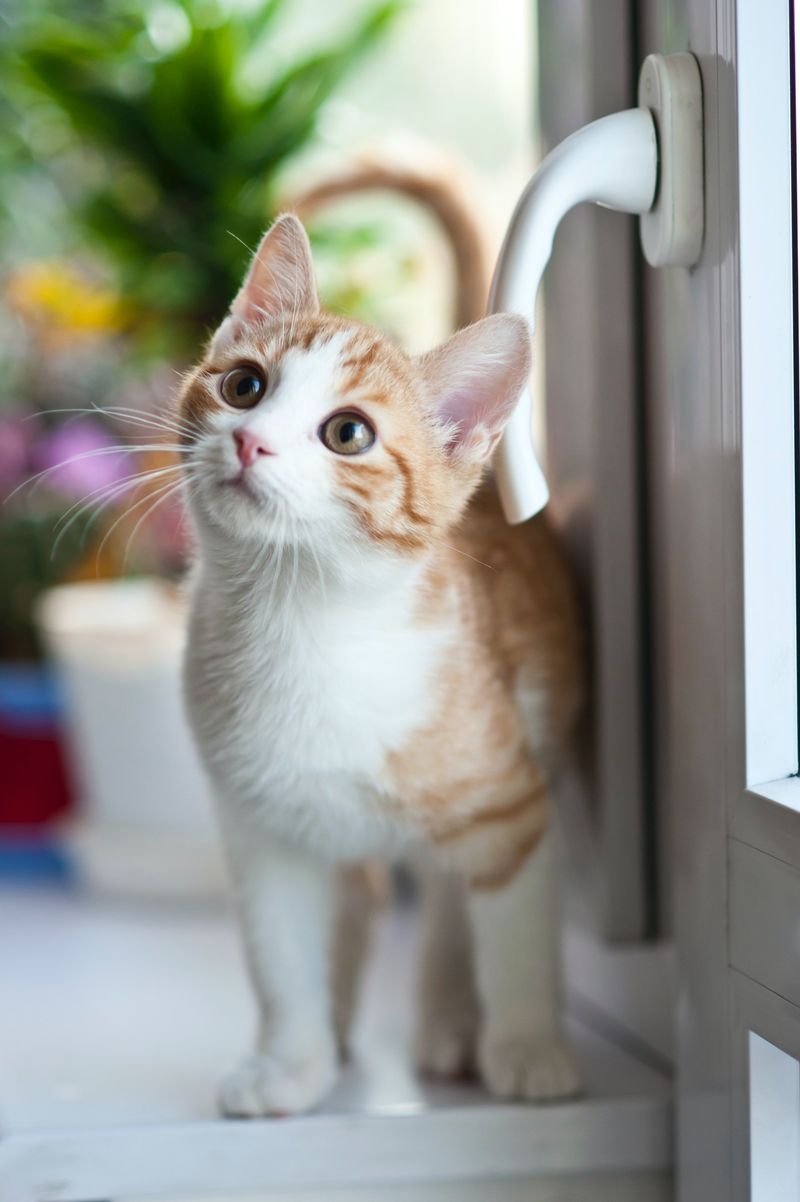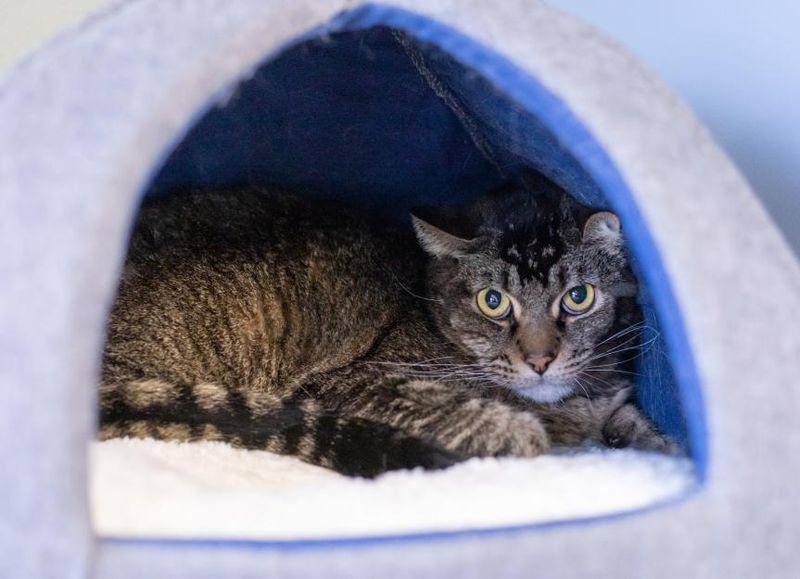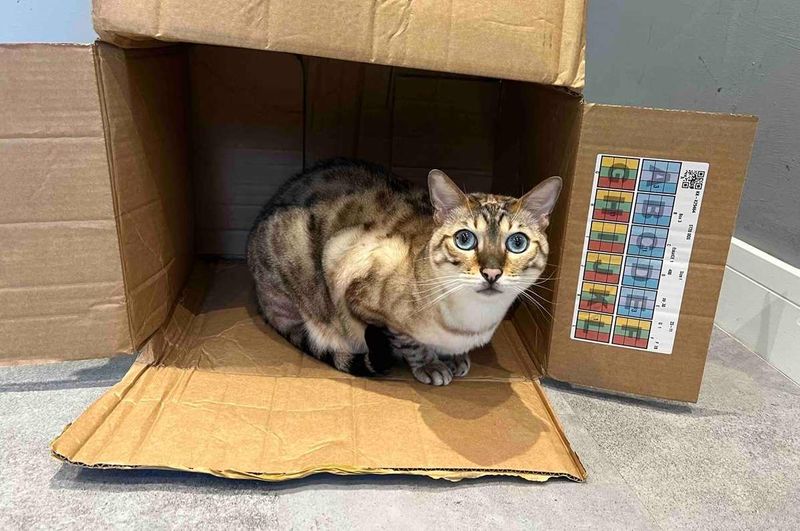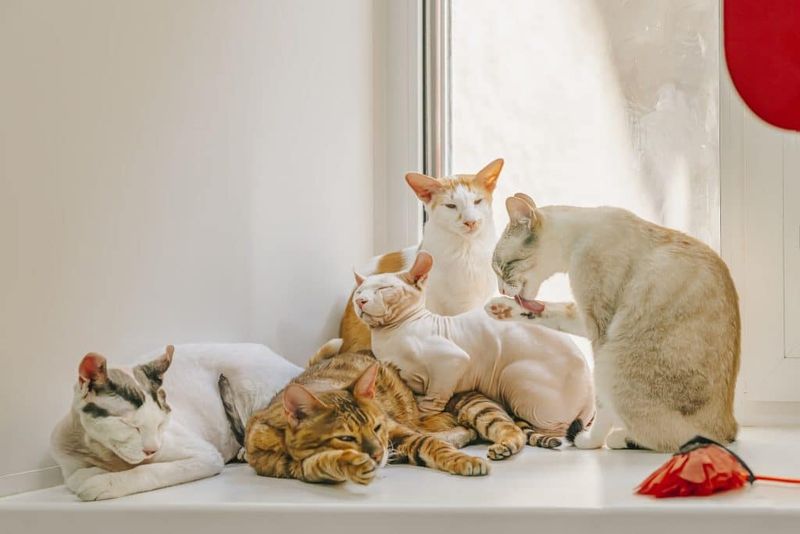📖 Table of Content:
Cats are often admired for their independent and mysterious personalities, yet some can exhibit shy behavior. This type of behavior can be puzzling for cat owners, especially when their normally confident feline becomes fearful or hesitant. Understanding the underlying causes of this timidity is essential for ensuring your cat’s well-being.
There are many factors that could contribute to a cat’s shy demeanor, from past experiences to environmental influences. Some cats may simply be more naturally reserved, while others may develop timidity due to stress or lack of socialization. Knowing what might be causing this behavior helps in creating a more supportive and calming environment for a cat.
While timidity can sometimes be a normal trait, it’s important to recognize when it might indicate a deeper issue. Identifying the root cause can lead to better ways of addressing the behavior, ensuring that a cat feels secure and confident. Here are 9 common reasons why a cat might act timid and how to respond appropriately.
1. Early Socialization
A timid cat often stems from its early life experiences. If a kitten doesn’t receive proper socialization during those crucial early weeks, it may grow up wary of new people and situations. Imagine a young cat exploring a room filled with unfamiliar sights and sounds.
Without positive interactions during this formative period, your cat might retreat to a quiet corner, unsure of how to react. Socialization isn’t just about meeting people but also experiencing different environments and noises. For a cat, these early lessons shape their adult personality, impacting how they perceive the world around them.
2. Past Traumas
Cats, like humans, can carry emotional scars from past traumas. Whether it’s a harsh encounter with another animal or a frightening experience with loud noises, these events can leave lasting impressions. Picture a cat that jumps at the slightest sound or shies away from a gentle hand.
These reactions are rooted in previous experiences that taught them to be cautious. Understanding these triggers can help in providing a safe space for your feline friend to rebuild trust. Gentle reassurance and patience may gradually help them to overcome their fears.
3. Genetic Influences
Some feline personalities are influenced by genetics. Just as humans inherit traits from their ancestors, cats can be naturally more reserved due to their lineage. Imagine two siblings: one frolics around confidently while the other watches quietly from the sidelines. This difference may not indicate any issue but rather a natural variation in temperament.
It’s essential to understand that not all cats are outgoing by nature. Embracing a cat’s genetic disposition allows for a tailored approach to their care, ensuring they feel secure and appreciated.
4. Lack of Environmental Stimulation
Timidity can arise from a lack of environmental stimulation. Picture a cat sitting by the window, staring longingly at the fluttering birds outside. Without enough interactive play or enrichment, cats might become withdrawn or shy. A dull environment doesn’t engage their natural curiosity and hunting instincts, leading to a reserved demeanor.
Providing toys, climbing structures, and interactive playtime can transform their world, encouraging them to explore and engage more confidently. This stimulation can bring out a cat’s adventurous side, reducing timidity over time.
5. Health Issues
Sometimes, a timid demeanor may mask underlying health issues. Imagine a cat that suddenly becomes withdrawn and less interactive. It might not just be a change in mood but an indicator of discomfort or pain. Health problems like dental pain or digestive issues can cause a cat to retreat and avoid activity.
Regular veterinary check-ups are essential to ensure any hidden ailments are addressed. By maintaining your cat’s health, you can aid in alleviating unnecessary stress or anxiety, helping them feel more secure and confident.
6. Changes in Home Environment
Cats are creatures of habit, and changes in their environment can be unsettling. Imagine the living room suddenly rearranged, new furniture in place, and boxes everywhere. To a cat, this is a world turned upside down. Such changes might cause them to retreat, seeking solace in familiar corners. Cats thrive on routine, and any disruption can lead to increased timidity.
Gradual introductions to changes and maintaining some consistency can help them adapt more peacefully, providing assurance and stability amidst the newness.
7. Overcrowded Living Conditions
When living with many cats, some may feel overwhelmed by the hustle and bustle. A timid cat might escape the chaos, seeking a quiet hideaway. Offering them personal space can reduce stress and create a sense of security.
Designating individual areas for each cat ensures they have a place to retreat. Understanding the dynamics of a multi-cat household can reduce tension and promote harmony, allowing timid cats to emerge from their shells confidently.
8. Natural Cat Personality
Some cats are naturally reserved, embodying a quiet and observant demeanor. Picture a cat lounging on a high perch, surveying its kingdom with quiet grace. This isn’t timidity but rather a preference for peace and observation. Accepting and celebrating this natural inclination helps in forming a stronger bond.
Not every cat needs to be the life of the party. Understanding and respecting their personality allows them to thrive in an environment that suits their nature, fostering a loving and stress-free companionship.
9. Fear of Strangers
When new people enter the home, many cats react with caution, perceiving them as threats. Picture your cat retreating to a hidden spot, carefully watching unfamiliar faces. This instinctual behavior is a survival tactic, not a flaw. Offering a secure hideaway can help your cat feel more comfortable during social gatherings.
With gradual exposure and positive reinforcement, they may grow more comfortable over time. It’s about finding the balance between introducing new people and respecting their need for security, allowing their confidence to blossom naturally.


